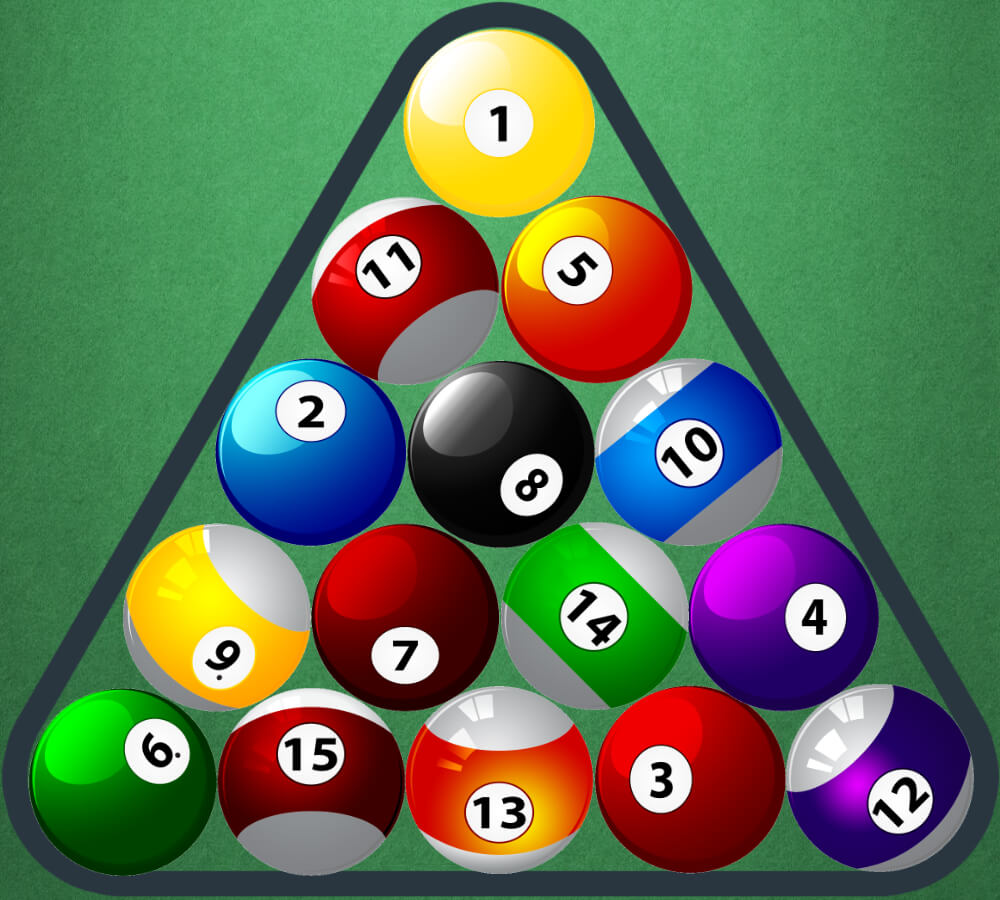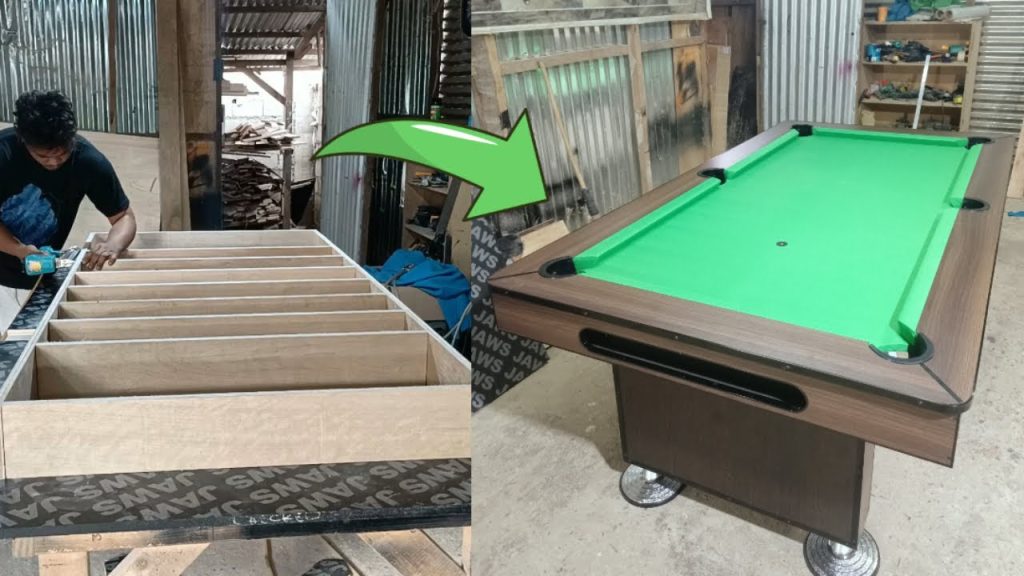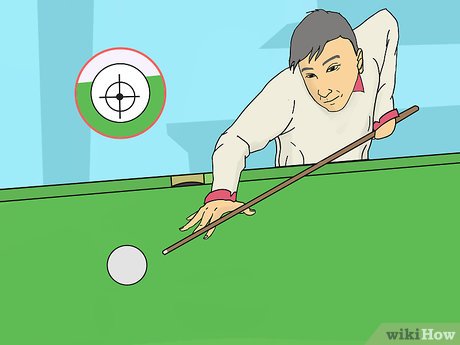Racking billiards is an essential skill for every player. It sets the stage for the game.
Setting up the billiard balls correctly can make a big difference in your game. A proper rack ensures a fair and exciting start, influencing how the balls break and spread across the table. Whether you’re new to billiards or aiming to improve, understanding the right way to rack is crucial.
This guide will walk you through the steps, helping you master the technique. Get ready to impress your friends with your precise and efficient racking skills. Let’s dive into the world of billiards and learn how to rack like a pro!
Introduction To Billiards Racking
Racking billiards balls properly is crucial. A good rack sets the tone for the game. It ensures fair play and consistency. Knowing how to rack can improve your game.
Importance Of A Proper Rack
A proper rack ensures the balls are tightly packed. This leads to a fair break. It prevents balls from moving randomly. This consistency is key in competitive play.
Here are some reasons why a proper rack is important:
- Fair Play: Ensures all players have an equal chance.
- Consistency: Keeps the game predictable and fair.
- Improved Breaks: Leads to better and more controlled breaks.
Common Mistakes
Many players make mistakes when racking. These mistakes can affect the game. Let’s look at some common errors:
| Mistake | Effect |
|---|---|
| Loose Rack | Leads to unpredictable breaks. |
| Incorrect Ball Position | Unfair advantage to one player. |
| Not Centered | Breaks skewed to one side. |
Avoid these mistakes for a fair and fun game. Ensure all balls are tightly packed. Check the position of each ball. Place the rack in the center of the table.

Credit: www.libertygames.co.uk
Essential Equipment
Racking billiards requires specific equipment to ensure a smooth game. Essential equipment includes a rack, balls, and a table. Knowing about these tools helps in setting up the game correctly. Let’s dive into the details.
Types Of Racks
There are different types of racks used in billiards. The most common ones are:
- Triangle Rack – Used for games like 8-ball and straight pool.
- Diamond Rack – Ideal for 9-ball pool.
- Template Rack – A flat rack often used in professional games.
| Rack Type | Best For |
|---|---|
| Triangle Rack | 8-ball, straight pool |
| Diamond Rack | 9-ball |
| Template Rack | Professional games |
Choosing The Right Balls
Choosing the right balls is crucial for a fair game. Standard billiard balls have a diameter of 2.25 inches and weigh about 6 ounces. Here are some types:
- Standard Balls – Used in most billiard games.
- Aramith Balls – High-quality balls used in professional games.
- Numbered Balls – Essential for 8-ball and 9-ball games.
Ensure the balls are clean and free of scratches. This helps in achieving a smooth roll during play.
Standard Racking Techniques
Understanding how to rack billiards correctly can improve your game. Proper racking ensures a fair and consistent break. Learn the standard racking techniques for common billiard games.
Eight-ball Rack
The eight-ball rack uses a triangular rack. Place the 8-ball in the center. Position the 1-ball at the top corner. Place one solid and one striped ball in the bottom corners. Randomly fill the rest, ensuring a mix of solids and stripes. Ensure the balls are tightly packed.
Nine-ball Rack
The nine-ball rack uses a diamond-shaped rack. Place the 1-ball at the top corner. Position the 9-ball in the center. Randomly place the remaining balls. Ensure the balls are touching each other. Tight racking is crucial for a good break.
Advanced Racking Strategies
Advanced racking strategies can give you a significant edge in billiards. Learning these techniques will help you control the game better. In this section, we will discuss two key strategies: breaking clusters and positioning for breaks.
Breaking Clusters
Breaking clusters is an advanced technique. It involves arranging balls in a way that they separate easily. This reduces the chances of balls sticking together. Use this strategy to create more open shots. Place balls with similar spin characteristics near each other. This helps to ensure they move apart quickly during the break.
Positioning For Breaks
Positioning for breaks focuses on the initial setup. Proper placement can influence the spread of the balls. Place the cue ball strategically to maximize your chances. Aim for the center or slightly off-center positions. This provides more control over the break. Align the balls in a way that directs the cue ball back to the center. This helps to maintain control and plan your next shot.
Common Variations
In the world of billiards, there are several ways to rack the balls. Each method serves a different game type. Knowing the common variations helps players set up the game correctly and ensures fair play. Let’s look at some popular racking methods.
Ten-ball Rack
The Ten-Ball rack has its unique formation. It uses a triangular shape with ten balls. The 1-ball is placed at the apex, which is the front of the rack. The 2-ball and 3-ball are positioned at the back corners. The 10-ball goes in the center of the triangle. All other balls fill the remaining positions randomly.
| Position | Ball Number |
|---|---|
| Apex | 1 |
| Back Corners | 2, 3 |
| Center | 10 |
Straight Pool Rack
The Straight Pool rack uses all fifteen balls. It has a triangular shape. The apex ball is placed on the foot spot. The 1-ball goes at the front. The 5-ball is placed at one of the back corners. The 15-ball is placed at the other back corner. The other balls fill the triangle randomly.
- Apex: 1-ball
- Back Corners: 5-ball, 15-ball
- Foot Spot: Apex ball
Racking properly ensures a fair start for each game. Whether you play Ten-Ball or Straight Pool, understanding the common variations helps you set the table right every time.
Troubleshooting Racking Issues
Racking billiards can sometimes be tricky. Even with the best intentions, issues may arise. Troubleshooting these problems ensures a fair game and a good break. Let’s delve into common racking issues and how to fix them.
Loose Racks
A loose rack can ruin the break. Balls spread unevenly or stay clustered. To avoid this, press the balls together firmly. Use your fingers to push them tight. Check the triangle is snug against the balls. If the triangle is old or warped, consider replacing it. A tight rack leads to a better break.
Misaligned Balls
Misaligned balls cause issues during the break. The balls should form a perfect triangle. Ensure the apex ball is on the foot spot. Adjust the triangle to align the balls. Look from different angles to check alignment. Use a template to help if needed. Proper alignment ensures a fair start.
Practice Drills For Perfect Racks
Practicing your billiards racking skills can make a big difference. Consistent and accurate racks ensure fair gameplay. Let’s explore some practical drills to improve your racking technique. These drills focus on consistency and speed.
Consistency Drills
Consistency is key in billiards. Start by racking the balls the same way each time. Place the 1-ball at the front. Position the 8-ball in the center. Ensure the other balls are randomly placed. Double-check the tightness of the rack. Repeat this process multiple times. Aim for a uniform rack each time. This practice builds muscle memory.
Speed Drills
Speed is crucial for tournament settings. Begin by timing yourself while racking. Aim to reduce your racking time gradually. Focus on keeping the rack tight. Avoid sacrificing accuracy for speed. Practice with a stopwatch. Challenge yourself to beat your best time. Consistency and speed together enhance your racking skills.

Credit: www.reddit.com
Tips From The Pros
Racking billiards might seem simple, but there are expert tips that can help. Professionals share their insights to make your game better. These tips will help you set up a perfect rack every time.
Professional Insights
Pros always start with a clean and smooth table. Dust or debris can affect the rack. They also ensure all balls are tightly packed. This helps with the break. A loose rack can mess up the game. They use the triangle rack tool for precision. The front ball goes at the apex. This ball should rest on the foot spot. The 8-ball is placed in the middle. The two corner balls are different colors. This setup ensures a fair game.
Common Pitfalls
Many players forget to clean the table. This can lead to an uneven rack. Another common mistake is not packing the balls tightly. This can result in a poor break. Some players place the balls randomly. This can cause disputes during the game. Following the correct order is crucial. Always check the balls are touching each other. Avoid gaps between them. This ensures a smooth break. Practicing these tips helps improve your racking skills.

Credit: blattbilliards.com
Frequently Asked Questions
How Do You Rack Billiards Balls Correctly?
To rack billiards balls correctly, use a triangular rack. Place the 1-ball at the apex, the 8-ball in the center, and the two corner balls as solids and stripes. Ensure all balls are touching.
What Is The Proper Order For Racking Pool Balls?
The proper order involves placing the 1-ball at the front, the 8-ball in the center, and alternating solids and stripes.
Why Is Racking Billiards Balls Important?
Racking billiards balls is important because it ensures a fair break. Proper racking leads to a consistent and predictable game start.
Are There Different Racks For Different Billiards Games?
Yes, different billiards games use different racks. For example, 8-ball uses a triangle rack, while 9-ball uses a diamond rack.
Conclusion
Racking billiards is easier than you might think. Follow the steps discussed. Keep practicing to perfect your setup. Ensure all balls touch each other. This creates a tight rack. Remember, a good rack leads to a smoother game. Enjoy your time playing and improving your skills.
Happy racking and shooting!


